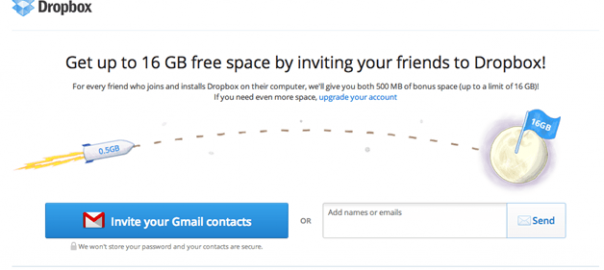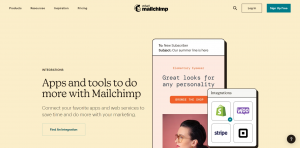I have to disagree to a mindset that growth hacking is just another buzzword. Growth hacking is a unique practice with its set of goals, and it often extends beyond digital marketing, per se, to include using branding and even customer service as marketing devices.
In the simplest words, growth hacking is adopting and adapting ideas, techniques and methods that allow you to achieve your goals for business growth. The idea is that in order to achieve significant business objectives today, modern online businesses need to look beyond traditional marketing ideas and dive into some highly creative practices to get clear results in terms of both sales and retention. And what better place to start than with your most difficult customers?
What is a Difficult Customer?
Answering this question is not as simple as it sounds as there are quite a few types of customers that come under this category. Aggressive clients, customers who don’t like to wait, customers who think they are the only people that matter.
I love this post by Eunisse De Leon in which she defines different types of difficult customers, in a very light and pleasant tone. But seriously, every business at some point comes across customers who seem like they will never be happy. They’re often the most vocal, too. My advice is not to learn from these customers and develop techniques to eventually turn them around and use their energy and comments to improve, promote and grow your business.
3 Growth Hacks with Your Most Difficult Customers
As Bill Gates once said, “Your most unhappy customers are your greatest source of learning.” Gates is a wise man. Learning is the key to growth hacking with your most demanding customers, and here are some proven ways to learn, adapt and grow with them.
Listening
In the age of social media, the chatter never stops. Why not take some time to listen to your customers instead of just responding to them (or ignoring them)? By listening, I mean considering the causes of their comments, not just the comments themselves. The way to turn this process into growth hacking with your most difficult customers is to give them a forum designed around improving your actual product or service, rather than just an open discussion (e.g., Twitter) where people sometimes feel the need to comment on everything all the time 🙂
UserVoice is an awesome tool for this type of growth hacking, where you essentially build a forum for (current and potential) customers to make explicit suggestions based on your actual product or service. Not only does this help you make a better product, but a lot of companies also see a growth in referrals. This annotated graphic from Neil Patel’s useful growth hacking primer illustrated the idea well.

Hint: If you aren’t able to develop a new feature that people have been asking for, explain why. Sometimes the issue is just that (like LinkedIn shutting down their public API). Your most vocal customers want to be kept in the loop, and they might even have ideas to hack around an issue and come up with an unexpected solution!
Social Proof
Another form of difficult customers is the brand-conscious. I mean people who either go for high-end brands only (“luxury” or “exclusive” brands) or will not try something new unless it’s already popular in their social circle. How are brand-conscious customers difficult? Isn’t brand consciousness exactly what all businesses strive for? Well, yes and no.
As a business owner, you know that every customer is just as valuable as the next. But some buyer personas don’t think this way–they want social proof. And they’ll keep asking for it, so why not just make it easy to find on your site?
The first way to introduce social proof is simply in the form of truly social proof from social media. Add customer comments from Twitter, Facebook, and other outlets to your site. Agile CRM does this nicely with a constant stream of Twitter testimonials that are easy to read and share.

The next step with social proof is to add logos to your site. If you have some “big name” customers or clients, why not let their social standing help your brand? Not only will your difficult “brand-conscious” customers stop asking for social validation about your business, but this will help to improve trust–and, therefore, sales–across the board. For example, when one of my freelance clients, the Workplace Depot, added social proof to their site, they saw an immediate spike not only in orders but in order value as well. If your customers are conscious of making decisions, then this social proof integration on your website helps them convert in your favor.
Unique Referral program
Some difficult customers are always looking for a discount. You might even think that discounts are the only qualities they see when they look at your product. I’ve even heard customers ask for a discount on new MacBooks at the Apple Store!
But I love this type of customer. Why? Because their needs can be easily fulfilled if you gamify your system a bit. Rather than offering them a significant discount for no reason, you can convert these difficult customers into brand marketers by letting them share their love of discounts with their social network.

Dropbox uses this idea to grow their customer base like a rocket. You can sign up for a 0.5GB free account with Dropbox, and they offer to move you to a 16GB account just by requesting your friends to join. And those friends can then invite more friends and get a discount themselves. Positionly, AirBnB, Gilt.com, everyone’s trying this gamification model these days, helping discount-savvy customers convert their network into dedicated brand advocates. It’s especially useful as a growth hack because it often doesn’t require moving outside of typical margins (from the business perspective, the “discounted” account is actually the standard account). And once the system gets going, growth happens organically and consistently.
Gamifying your system a bit can super increase your sales plus this will also allow you to continuously introduce you to the new audience. Nothing wrong with reaching a new audience automatically!
Conclusion
I hope that all of these tips will help you see customer service and branding as opportunities, not just goals. You might notice that all three growth hacks for challenging customers have something in common: they are all designed to increase customer happiness. And it’s a repeatable cycle that goes from Listening to Social Proof to Incentives and Referrals, then back again to Listening. Start building your endless growth-hacking loop today and you’ll find that it’s a win-win for your customers and your business. Not a bad outcome!
What growth hacking ideas are you using to turn difficult customers into brand advocates and reach a new level of success?
Business & Finance Articles on Business 2 Community(43)





